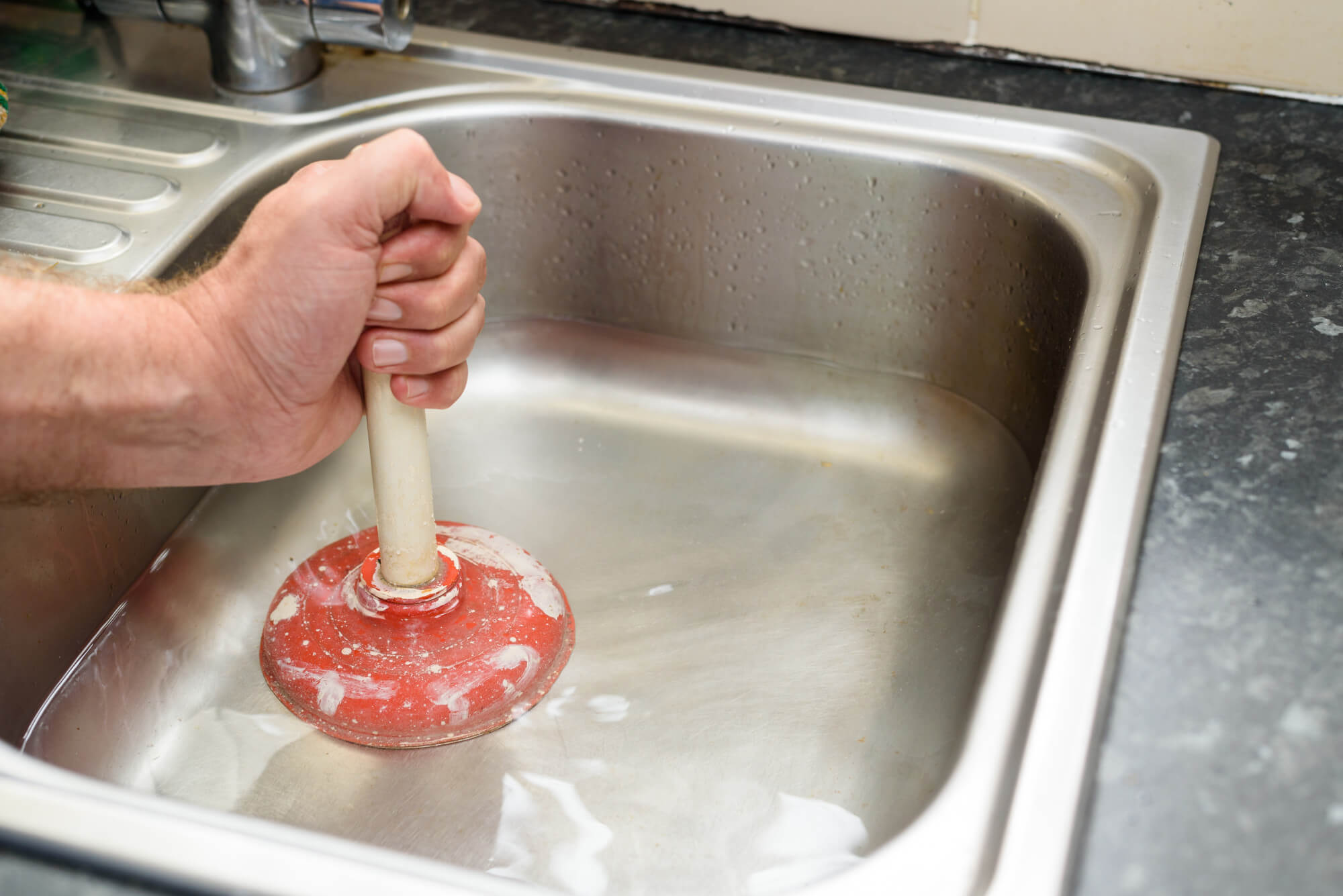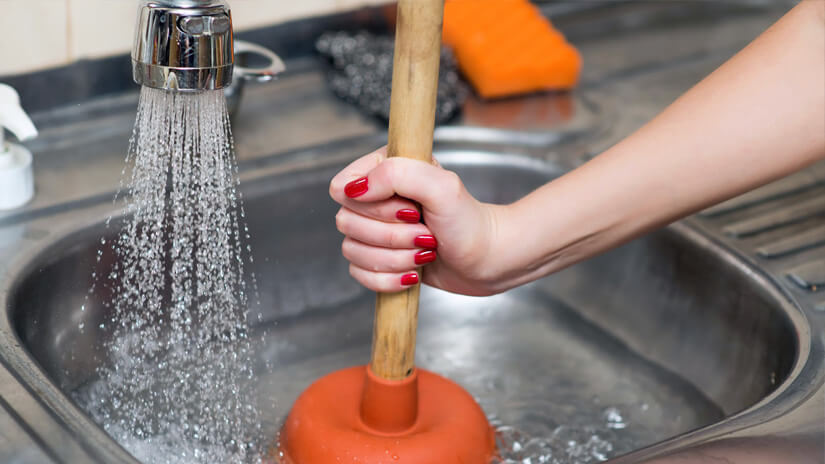Advice for Managing a Blocked Drain Before Seeking Expert Assistance
Advice for Managing a Blocked Drain Before Seeking Expert Assistance
Blog Article
This article in the next paragraphs involving What I learned from trying to deal with a clogged drain is immensely informative. Try it and draw your own personal conclusions.

Intro
Handling a blocked drainpipe can be a discouraging experience, disrupting everyday tasks and possibly causing damages to your building. However, before reaching out to pipes experts, there are actions you can take to address the problem on your own. In this guide, we'll explore do it yourself solutions and safety nets to take on a blocked drainpipe effectively.
Recognizing the Concern
The initial step in dealing with a blocked drain is acknowledging the indicators. Slow-moving drain, gurgling noises, foul odors rising from drains pipes, or water support up are common indications of a blocked drainpipe. Identifying these signs early can help prevent even more problems.
Typical Root Causes Of Obstructed Drains
Recognizing the variables that contribute to drain pipes clogs is crucial for efficient resolution. Usual culprits include hair, soap residue, oil, food particles, and international objects like sanitary items or paper towels. Tree roots invading below ground pipelines can additionally cause substantial blockages.
Do it yourself Solutions
For minor obstructions, numerous do it yourself options can be reliable. Putting boiling thin down the drainpipe can assist liquify grease and debris. Baking soda and vinegar or a blend of salt and cooking soft drink can work as natural cleaners. Utilizing a plunger or pipes serpent to displace obstructions is one more alternative.
Devices and Equipment
Having the right devices accessible can make DIY drainpipe cleansing extra efficient. A plunger is a versatile device for clearing obstructions in sinks, bathrooms, and showers. A pipes serpent or auger can get to much deeper blockages, while drain cleansing chemicals can be utilized cautiously for persistent obstructions.
Safety nets
To avoid future clogs, embracing preventive measures is essential. Mount drain guards or strainers to capture hair and particles before they enter the pipes. Routinely flush drains with warm water to liquify oil build-up, and stay clear of taking care of grease or strong waste down the drain.
When to Call a Specialist
While DIY options can fix small clogs, certain indicators show the demand for specialist assistance. Persistent obstructions, foul odors in spite of cleaning efforts, or multiple drains backing up all at once are warnings that require professional intervention.
Choosing the Right Pipes Service
When choosing a plumbing solution, think about elements such as experience, licensing, and client reviews. Pick a respectable plumbing with a performance history of top quality craftsmanship and transparent pricing methods.
Price Factors to consider
The cost of professional drain cleaning company can differ depending upon the seriousness of the obstruction and the plumbing's rates. Demand quotes from several providers and ask about any kind of added fees to make sure openness and prevent surprises.
Safety and security Precautions
When trying DIY drainpipe cleansing, focus on safety. Wear protective gloves and eyeglasses to prevent contact with unsafe chemicals or germs. Never mix various drain cleansing products, as this can generate harmful fumes.
Instance Studies
Real-life instances show the performance of do it yourself options and the significance of prompt expert treatment in dealing with drainpipe clogs.
Verdict
By complying with the ideas detailed in this guide, you can successfully take on obstructed drains pipes and prevent future pipes concerns. Whether choosing do it yourself solutions or seeking expert support, timely activity is essential to keeping a healthy pipes system and maintaining the honesty of your home.
How to Clear a Clogged Drain Yourself (And When to Call In the Professionals)
What Can Clog a Drain
Dirt Skin flakes Hair Grease Soap scum Food Offset pipes Tree roots Small objects Mineral buildup DIY Tricks to Unclog a Drain
You can fix this! Once you have identified the source of the clog (or have a vague idea), you can try one or a combination of these fixes in order to clear your plumbing.
Wire Hanger or Snake
Untangle and clear out hair from a drainpipe with a homemade snake. Use a straightened-out wire hanger with a 90-degree angle hook to locate the clog and drag out any unwanted material.
Remember not to push the clog further down to where the wire hanger cannot reach! If you need to follow up with a plunger, give it a try. Your efforts might be more successful after it’s been wire-snaked.
If you want to get fancy and don’t have a wire hanger to spare, head to the store and pick up a hand-operated drain snake. You can get one for $10-$30. It may save you the hassle, and provide additional length to reach deep into the clogged pipe.
Plunger
A cup plunger has a suction cup attached to a wooden handle. The rubber creates a seal around the drain, and increases the pressure force of the plunger.
Plunge for 30-second increments to loosen the clog. This may need to be repeated over the course of 15-20 minutes. Once plunged, run the water to flush the remaining material out of the drain.
Remember– never use a plunger if you have used a chemical drain cleaner. These chemicals can splash up from the force of the plunger and cause serious injury or burns.
Boiling Water
Hot water can sometimes break up materials into a flushable amount. Dirt, grease, and soap buildup requires heat in order to unstick from surfaces.
Take your kitchen kettle and heat your water to a boil. Once it reaches a rolling boil, pour it directly down the drain into the blockage. Carefully follow with plunging, if necessary.
Don’t worry if this takes more than one try! It can often take multiple kettles and repeated plunging in order to clear a particularly stubborn clog.
Chemical Drain Cleaner
As a last resort, pick up a bottle of chemical drain cleaner. Drain-cleaning chemicals are potent, and not very good for the environment.
You may need to wear protective eyewear in gloves before handling your bottle of chemical drain cleaner. Follow the instructions printed on the bottle, and flush with water as soon as the instructions allow. Do not follow with plunging.
Baking Soda and Vinegar
As a safer alternative to chemical drain cleaner, baking soda and vinegar can create a chemical reaction that clears tough clogs.
Combine one cup of cleaning vinegar with one cup of boiling water, and set aside. Once you have done this, pour half a cup of baking soda down the drain. Give the baking thirty seconds to settle and cover a large portion of the problem drain.
Following the baking soda, pour down your vinegar and hot water solution. Once the vinegar and baking soda combine, the mixture will bubble and fix. Let this reaction fizzle in the drain for about an hour.
After an hour, follow with a kettle’s worth of hot water. The heat and liquid should flush out any remaining material.
When to Call a Plumber
If your DIY attempts haven’t cleared your clog drain, it’s time to call in a professional. It’s not worth losing access to your kitchen sink or high-traffic bathroom. A clog in a vital area can keep you from the things you’d rather be doing, and derail your routine.
Anytime a clog is causing water to spread is a time to call in a plumbing service. What starts out as a little bit of water can quickly grow into serious, expensive water damage.
Additionally, a serious clog can result in burst pipes or serious leaks. Make sure you know when to take it seriously!
https://myguysnow.com/how-to-clear-a-clogged-drain-yourself-and-when-to-call-in-the-professionals/

I'm very interested in 8 Tips For Clearing A Blocked Drain and I am assuming you enjoyed the entire page. Enjoyed our post? Please quickly share it. Help someone else find it. Thanks a bunch for your time. Don't hesitate to stop by our website back soon.
Article Report this page